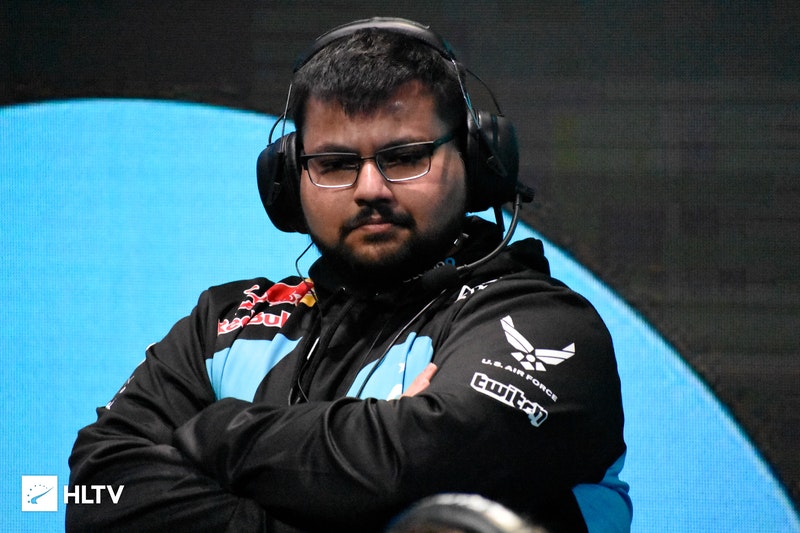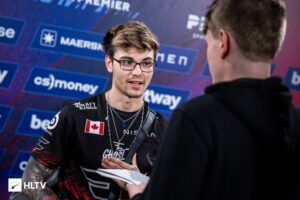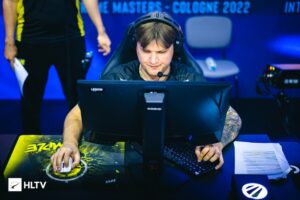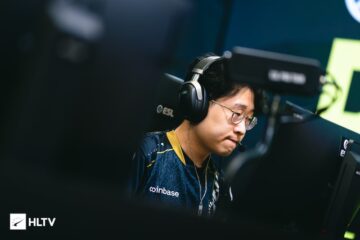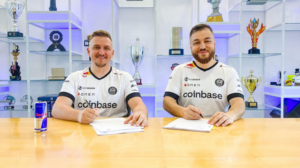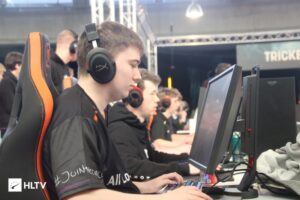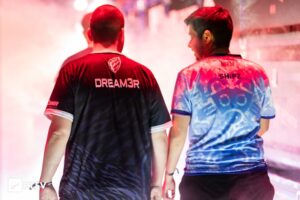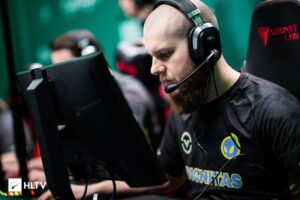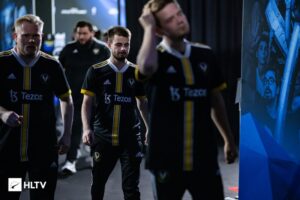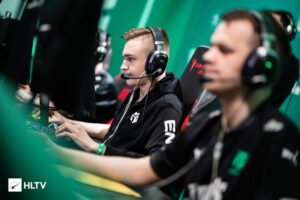Best known for his time coaching the ELEAGUE Major-winning Cloud9 team, valens has spent the last two and a half years in the background working out of the spotlight in Evil Geniuses, building out a new division under the organization as its Head of Data Science.
Though his duties already involved working with the CS:GO team behind the scenes, today it has been announced that the 32-year-old is making a return to the forefront of the organization’s operations in the division after being named Evil Geniuses‘ Director of Athletics for Counter-Strike.
Hidden behind the rather fancy title is a job that will see valens become the key figure behind EG’s new and ambitious ‘Blueprint’ project, which recently saw the organization bring in two new teams from free agency, EG.PA and EG.CD, and which promises to evolve from three individual lineups into a fluid 15-man roster heading into next year.
Former C9 coach and EG’s Head of Data Science valens transitions into a much more hands-on job
To find out more about what his role will entail beyond general management work behind the scenes and about how exactly this never-seen-before project will work in practice once it truly gets underway, we had the chance to sit down with valens for an extensive, exclusive interview about the new job.
The former professional player, coach, and data scientist gave us a lot of insight into what exactly he sees as the biggest benefits of ‘Blueprint,’ what the main challenges are of making it work as intended with so many moving parts, and how tournament organizers will react to an organization having three different teams on offer for their events.
valens also commented on the decision to send the former Party Astronauts team to Pinnacle Cup Championship as opposed to the pre-existing roster around Jake “Stewie2K” Yip, and what the future holds for the most popular of the three lineups currently on Evil Geniuses’ payroll.
Dive in below to hear from the American about all things ‘Blueprint’ and his role as its Director:
You were the Head of Data Science at EG for over two years. What kind of contact did you have with the CS division during that time?
This was back in late-2019 when I went from Cloud9 to EG, and since then in the data science division we took each game title separately, worked on it, and then provided value to each game. We didn’t have a big team to work on right away in every game at the same time. Initially we worked on League of Legends, then we worked on Counter-Strike, and then other games, VALORANT, DotA 2, and things like that.
In Counter-Strike, I think the biggest impact started to come towards the end of last year and this year itself, but from a perspective of how we actually make practice more productive we weren’t necessarily utilizing a lot of the data science yet for developing strategies and anti-strategies for preparing for matches. It was more about: ‘Are we practicing the right way? What are the areas of improvements and weaknesses for our players, for our team playstyle?’ And things like that.
We took a lot of learnings, as well, because we did do League of Legends first. In terms of what was working well to make our coaching staff’s week more efficient, we looked at the manual tasks the coaching staff currently does every week and automate as much of that as possible. That was the overall goal and that led to Counter-Strike as well.
When you were in Cloud9, you went between coaching and data science jobs back and forth, but in the last two years and a half or so you’ve settled into the data role with EG. What made you want to go in a different way now and transition into this new job?
First of all, the two passions of mine have always been data science and Counter-Strike. To be able to go back and forth between those two for me is obviously a luxury in a lot of ways, but I also have a lot of experience on both sides. After I see that in the last two and a half years the data science team that we built out of just one person, which was myself, to a team of data engineers, we have data scientists, analysts, and it’s getting to a pretty good spot where it can start to be self-sustainable in the data science team. So I think the timing worked out. We were obviously struggling in the EG Counter-Strike division ourselves, we also brought on these two new teams as part of Blueprint, and more support was required for Counter-Strike, and I was probably the best suited in EG to take that on.
We were obviously struggling, we also brought on these two new teams as part of Blueprint, and more support was required for CS, and I was probably the best suited in EG to take that on
It’s a fancy title, Director of Athletics for Counter-Strike. What does it entail?
I think it’s a pretty fancy name for basically a General Manager combined with someone who has that experience to bring in the data side of things. I’ll be working very closely with the data science team that I was leading, and also do typical GM duties as well, so things like scouting for new players and evaluating our current players properly.
Then things like ‘What does good look like?’ Every player has a different baseline for what good looks like, so every single week of practice, every single match that they play, giving players feedback in an automated way, again working with the data science team, to give an indicator of how much better than your average level you’re playing at — your average level, it’s not comparing you to other players. We need to know if we make the right hiring decisions for players, which is partially on me and coaching staff as well, we’re using our experience in data to make those decisions and then we gotta compare the level that you’re playing as a player to yourself, not necessarily compare you to other people.
That baselining and benchmarking falls hand in hand with scouting as well as player evaluation, so that’s a lot of general management there, but obviously the day-to-day management also has stuff like contracts and negotiations there, being the team’s spokesperson whenever issues come up, but also we need to give comments on things like that. Generally you can think of this role as general management combined with this data science skillset that I’m bringing on board.
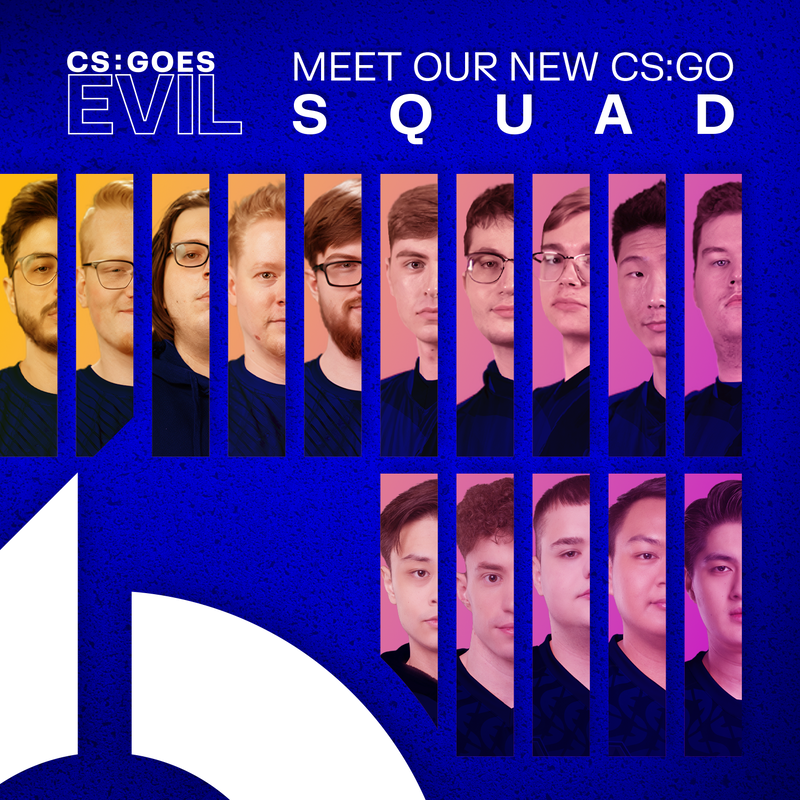
The ‘Blueprint’ project features three teams at the moment
What about from a decision-making standpoint? Who are going to be the people who make the big decisions, whether it be roster changes or who plays what tournament and things like that?
Ultimately, that’s gonna fall on me. The way that I had a conversation with Nicole [LaPointe Jameson], our CEO, is that when we do poorly it should be on me and when we do well it should be on me. Obviously the players and the coaching staff are a big part of both of that, but I wanna take on that accountability because if you don’t have someone take that accountability on there are too many things to blame when things go wrong. I wanna take that on because I trust a lot in my judgment, I trust a lot in the team that I’m gonna be building around me, which means the players and the coaching staff. So being able to delegate properly goes hand in hand with picking the right folks in the first place, which ultimately is going to fall on me.
The way that I had a conversation with Nicole, our CEO, is that when we do poorly it should be on me, when we do well it should be on me; I wanna take on that accountability
How much did you have to do with the original decision to go in this direction, to launch this Blueprint project?
I’ve been consulted on that for a while now in terms of how that evolved over time at EG, in terms of which players are at the top in NA outside of the teams that are already in Liquid, EG, Complexity, and who should those players be, I was consulted there as well. The overall direction of the project and how we should get practice to be different in North America by having these in-house teams, that’s also something where I consulted, and the data helped as well in terms of determining… you obviously know the way the practice is, you scrim a bunch. You have some theory and review, there’s a lot of scrimming, though, and most of that scrimming, if not all in CS currently, is against external team partners. You can’t really control at all what you’re going to be working on besides if the other team that day allows you to practice on those areas.
Controlled practice environments to be able to focus on things like, let’s say, one of our three teams is really weak on Inferno at B site for car control, we have trouble holding onto it. If we go into a typical scrim day, we have no idea if we’re going to be facing an aggressive car control team on the T side, so maybe we may not ever get to practice that. Using data first to uncover what our areas of improvement are and then working between the coaching staff amongst the three teams to determine ‘okay, let’s do drills.’ And we can do this, revolutionizing practice that you just can’t do right now with external scrim partners.
This sounds great in theory, but then one of those teams is going to have that problem, but then maybe the other one wants to work on something else, and you’re going to have different weaknesses. How do you make it all mesh together when there are so many moving parts?
What’s interesting is, even if that area or that drill doesn’t necessarily improve one of the teams because they don’t have that weakness, that becomes the same thing as them scrimming right now. You can’t control for example if a team you’re playing against in scrims is working on something on their side. You have to react. So in a lot of ways it either will be the same as it is now, because it’s maybe not the area you need to improve on but it tests your strengths and makes sure it’s still your strong suit, and that’s if it’s not a weak point for you, and obviously if you’re the team that needs to improve on that area it helps quite a bit as well. We can structure practice in a way that half the time we’re working on areas of improvement for one team and half the time we’re working on an area of improvement for the other. It ends up being quite holistic in that way.
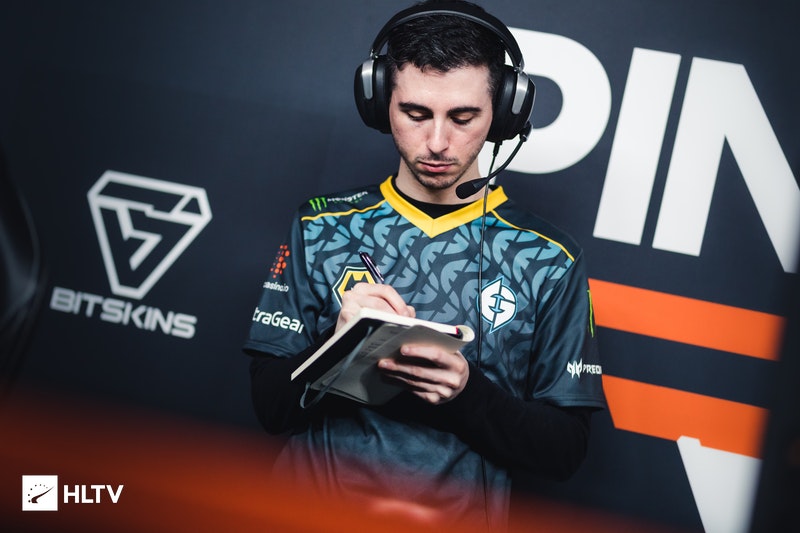
EG’s coaching staff will expand, with each of the three teams having a full team of staff
Within the announcement it said it was going to work more as a three-team setup at first, but as it develops it’s going to move into a fluid roster. How is it going to move into that second phase?
It’s quite different than how things have been done in Counter-Strike. First of all, I wanna say that there seems to be a continuous push to be enabling multiple teams in an organization to be participating in events. For example, one or two years ago I don’t think you could have even had an ECL [ESL Challenger League] team if you had a Pro League spot for a team. That changed. Working with TOs to figure out how we develop the scene while also giving credit where it’s due if a team deserves to be in the ECL and we also have an EPL team, we should be able to do that and other teams have kinda vouched for that, as well. It’s shifting towards the approach of having multiple teams be able to perform under the same banner. That’s the first thing.
At the end of the day, we want the best five players to be participating in the best events. That’s what any organization should hope for. This basically allows us to keep better tabs on who is doing really well. If let’s say next year comes around and we do need to make a roster change on the teams that are attending the BLAST or the EPL events, what will happen is, generally then we would have to start a scouting process, we don’t necessarily have experience with players that we might bring on board to trial and try out, we have to figure out if their communication’s good, how’s their attitude, on top of if they’re actually good at the game in the role that we need. Now we have a pool of players that we have much more insight into, that we can easily slot in if needed, and I think that’s the beauty of having an in-house larger roster, where we can be more fluid between the three teams.
There seems to be a continuous push to be enabling multiple teams in an organization to be participating in events
Let’s say a Liquid player becomes available and is willing to join EG, and suddenly that means one of the guys you’ve been bringing up all this time is not going to get a chance to go up because there’s simply a better player available outside.
Do you see issues arising in that aspect and in the motivation of the players that don’t get to play at the biggest events because there isn’t a spot?
That happens all the time even in traditional sports and in Counter-Strike, where you might have a superstar become available for various reasons. Of course, I think the best organizations are going to be looking at that player whenever they become available because of the question of ‘Can they actually make our team better?’ That being said, I don’t think it affects motivation of our other teams that aren’t attending the biggest events because they’re competing against being on that five-man slot that is attending the best events in any case. Whether that’s competing against our current players on that team or someone else that becomes available their motivation doesn’t change, they’re going to stay highly motivated because that’s what they’re working towards anyway. That’s how I see it.
It’s been communicated very well to the two teams coming forward and whoever else joins EG in the future that this is the spot you’re working towards, but at the same time you’re also having resources from EG to perform and see if you can perform better. These teams that we brought on board haven’t had a lot of support in the last few years. Part of what we wanted to see is: With more support like better coaching staff and data science support, having someone to work against each other in our Seattle headquarters, can we unlock some of these players’ potential? These are all reasons that you would join EG, to be a part of this larger roster. It’s not necessarily just because you might not make it to the largest event, that’s the goal for everyone.
So what do you see as the biggest challenges of making this work and having everyone be happy about the position they’re in?
I think the number one concern that if I was a player and coming up in the scene, joining the roster like this, is how much time I would get to practice against the best players in the world, in North America, in Europe. I think that’s something we need to be very thoughtful of. We can’t just pretend that the best practice is in NA, right? The timing that these teams are spending in North America when they’re at NA events, when good teams are coming over here, that’s number one. Getting them practice in Europe when the big events are happening there so that all the good teams are congregating in a certain location in Europe, that’s also a big deal for us.
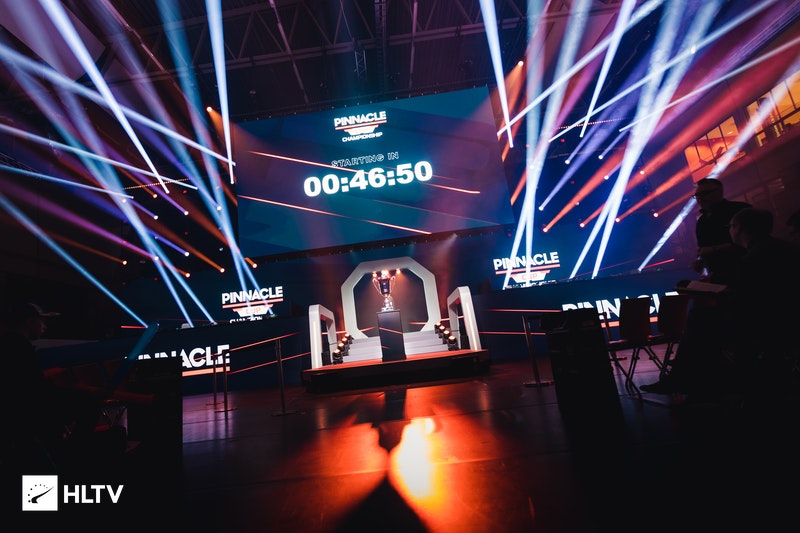
A wide variety of events gives EG the chance to field more than one of their teams, potentially all at once
I’ve noticed from discussing with other teams as well is that a lot of times they prefer to practice against competition that’s not attending events. You’re trying to practice something specific, you don’t wanna show it to a team necessarily. It’s quite nice to now increase the pool of competition that these teams that are attending these events have to scrim against as well as to have another playstyle they can experience. For us, it’s getting practice for the players, making sure that they’re developing, not just internally but also just playing against the best teams wherever they are. That’s gonna be some juggling between North America, Seattle, Europe.
To me it’s not the main team and extra players. In 2023 especially and beyond, the way we’re going to see it is that the best five at any given time should be attending the best events
The way that you’re talking about it sounds like this setup, where you have 10 extra players on top of the roster that’s going to attend the biggest tournaments, is still going to work in a way where those extra players will attend other events while the main roster is competing elsewhere even when we move into next year and it becomes more fluid?
I want to be kinda careful. To me it’s not the main team and extra players. In 2023 especially and beyond, I think the way we’re going to see it is that the best five at any given time should be attending the best events. Everyone else is just part of trying to get there and also developing themselves as players. What was the main question, actually?
Basically, whoever are the 10 players who aren’t attending the biggest events at any given time, they’re going to want to play tournaments. So, is it still going to work in a way where they will be able to compete as EG while the “main” five are competing elsewhere?
Yes, of course. Danny has mentioned this as well in a previous interview that there are times where an organization could have all 15 players participating in events at the same time. Whether that’s leagues online, events like Pinnacle Cup and these BLAST Showdowns, WePlay Academy League, and there’s a bunch of events that are happening, like Dubai that is happening while Pinnacle is finishing up. I think there are always going to be enough events that sometimes overlap and sometimes not.
What we have to be careful about is when two of the three teams are at events and that third team is not just because of timing, how do we get them good practice? Well, it just kinda transitions into the current state of NA practice, which if you only have one team that isn’t practicing, it’s not like they’re going to stop practicing and scrimming, it just becomes more external or we bring them to one of the locations where one of our other two teams are and continuing the same model. It doesn’t change too much, actually. In fact, if we have enough resources, which we will, for supporting all three teams, it just becomes self-sustaining. We can just treat each set of five players as a team and we have enough resources, practice doesn’t change, in fact we just enhance the practice based on these data science-oriented practice drills that we can tell the players and the coaching staff that it might be good to practice in these areas.
I think naturally over the course of practicing with three teams that are at our disposal we’ll have an indication of who works well with each other
This idea of an extended roster has been tried recently, but nowhere near to the level that you’re trying now, making it still very much untested. The biggest concern I would say people have is the chemistry issue and how to make sure that the five that you’re sending somewhere are going to have the chemistry that is needed to be able to peak at those events.
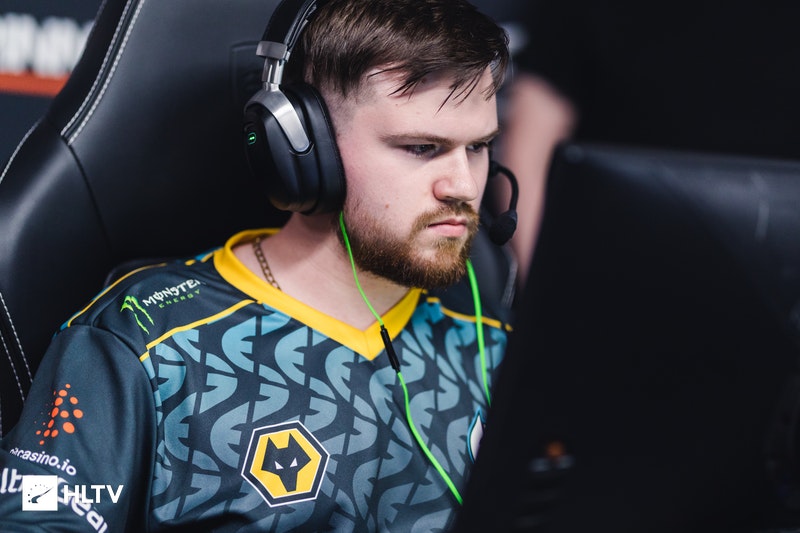
EG sent one of their new teams to Pinnacle Cup Championship last week
Do you agree that this could be a problem, and if so, how are you going to address it?
That’s an interesting point because the way it is currently is that we’re going to have enough opportunities to have some cross-over naturally throughout the course of the year due to things like players needing a break for burnout reasons. We’re going to have enough opportunities because of natural reasons like that, too many events, maybe there’s an emergency, maybe someone just needs to take a break for helping out their family with something, whatever comes up, or we just wanna test out a new person for a role because of performance reasons, attitude reasons.
I think naturally over the course of practicing with three teams that are at our disposal we’ll have an indication of who works well with each other. We’re also going to have our coaching staff amongst the three teams in constant communication, to understand first what kind of playstyles are we trying to get better at, and which players are better at certain playstyles, so I think we’ll have a good indication to know who will mesh well, which we can’t, again, if we didn’t have this kind of day-to-day practice with these players as opposed to traveling with someone for the first time. Those are things that are actually to me higher risk compared to having these 15 players constantly being evaluated as well as supported by our coaching staff.
Looking at the most recent example, you sent one of the — for a lack of a better word — secondary teams to Pinnacle Cup Championship instead of the original one, which I would imagine the organizers initially expected. Do you foresee an issue where tournament organizers are going to be demanding of what team you’ll be sending to their event and make sure the lineup they want to be there attends?
I think we’re very cognizant of the fact that, from a marketing and advertisement perspective, it makes sense that TOs might expect the best five to attend there from any organization. I think what’s interesting is that we’re never going to be sending a group of players to an event without first discussing it with the TO. They require the roster to be sent in advance because they’ve prepared things like promotional materials, so they know for sure. There will never be a situation where they expect a certain five and then surprise (laughs) I hop in and start playing.
That being said, there will probably be cases where — not just for us, but all teams — we expect a certain five and something happens where we needed to have a substitution or two substitutions for various reasons, could be emergencies, you never know. For those reasons, last-minute changes might impact it a little bit because we have an easier time filling that slot compared to most teams now, but I think the one thing nice is that the TO can expect which player pool we’ll be pulling from when we have those emergencies. I think we’re not gonna surprise TOs at all, they’re always going to have a heads up. That doesn’t mean the public might not be surprised, because generally the rosters are not known that every team will attend with, but the TOs will not be surprised.
When we commit to any event we will give the roster to the [tournament organizer] that we think is the best suited for this event, and they’re gonna have enough of a heads up
But more along the lines of approaching you in the first place, there’s always going to be quite a lot of time when the invite comes ahead of the event, and I imagine there’s a real possibility where you just won’t know which players will attend. Could that be an issue, where TOs will just stop approaching you guys because they expected a certain roster and that just couldn’t come for whatever reason?
If the TO’s perspective is that we will willingly send a worse set of five for some reason and try to pull a fast one underneath one, then of course they would stop approaching teams that have larger rosters, ourselves included. Obviously that’s not true. When we commit to any event we will give the roster to them that we think is the best suited for this event, and they’re gonna have enough of a heads up. If they have a problem with that, of course we’ll have a dialogue at that point. A lot of times, though, it might be because one of our three teams are already attending something that’s overlapping, so we literally can’t send that team, they’re already occupied.
TOs should have a pretty good indication of the calendar as well, so if there’s ever a situation where we have our best five available, but then we want to send one of our other teams to get more experience, we’ll also let them know. It’ll be a dialogue for sure. I think they’re gonna appreciate that honesty, I don’t really foresee any issues where they’re gonna have problems with our approach here.
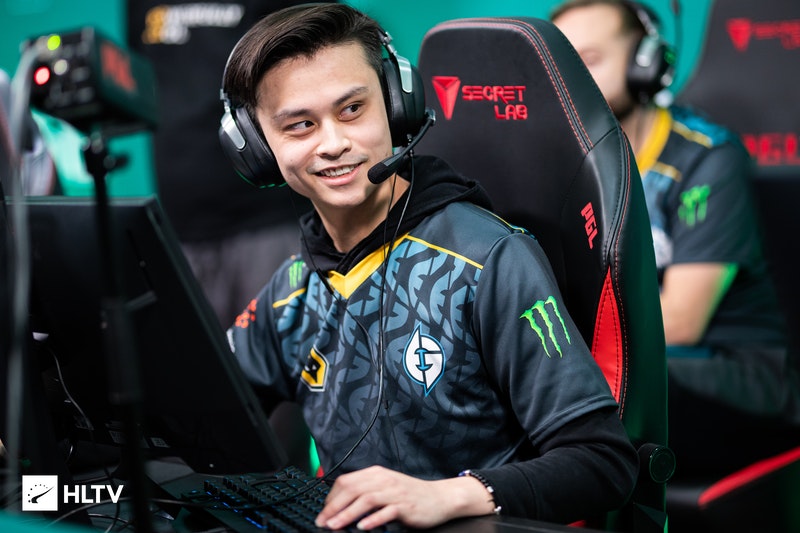
valens confirmed that we won’t see the Stewie-led roster compete until after the summer break
You mentioned coaching the coaching staff. After putting maLeK off the original lineup, you’re missing a coach for that team, so is there a plan for expanding the staff to more people than the ones you just added along with the new players?
The goal is that we’re gonna have a full coaching staff for each of the three teams because that’s what they deserve and that’s also the best way to get the most support and the best out of the players. So for sure, we’ll be expanding the coaching staff in the ‘soonTM’ near future, where we’ll have not only the primary coaches to help them with day-to-day practice, but also that coach will have a staff, we’re also going to be supporting it through analysts and data science team members as well as obviously myself, I can help in various different ways having the CS:GO experience as well as the data science background. So every team will have the staff dedicated to them, but also talking to each other.
We don’t wanna send a group of five during a lot of the discussion phase, because they’re not gonna be able to put their best foot forward
I wanted to close out by going back to Pinnacle Cup Championship. I thought it was a curious decision to send one of the new teams there, especially considering we haven’t seen the lineup around Stewie compete for quite a long time. Can you elaborate on that decision and what’s going on with that particular five?
It’s no surprise that the first half of the year didn’t go as planned for our pre-existing roster, the one with Stewie, autimatic, RUSH, Brehze, and CeRq. We’re in a situation where we basically are having a lot of interviews with the players and the previous coaching staff, as well as I was brought on board relatively recently to see where the teams can go, not just the teams we just brought on from PA and CD, but also our pre-existing roster.
Right now it’s a lot of planning, actually, and during that process the coaching staff we should bring on board is a question. We don’t wanna send a group of five during a lot of the discussion phase, because they’re not gonna be able to put their best foot forward, but also we wanna make sure we’re set up for success across all three teams for the second half of the year. That’s the primary goal for us right now. I think we’re always gonna put the best five that’s suited for an event forward. Obviously, PCC knew which roster we were going to send as well, there’s no issue there, and this is also an advantage of having a larger roster. If one of our rosters right now maybe playing isn’t the first thing on their mind because we need to figure out how to move forward, then we can take some liberties of sending folks that can get more experience and still put up competitive results.
Is it more after the off-season that we can expect to have this kick off in a proper way, where you’re going to have the best team going to the big events?
Yeah, we have quite a large off-season for our pre-existing roster especially. That being said, they’re gonna be working with our two new teams actually relatively shortly and integrating as well, so in terms of playing CS and keeping up with the meta and things like that there aren’t going to be any issues there, but in terms of seeing that roster perform again for fans I think we can expect that after the player break.
